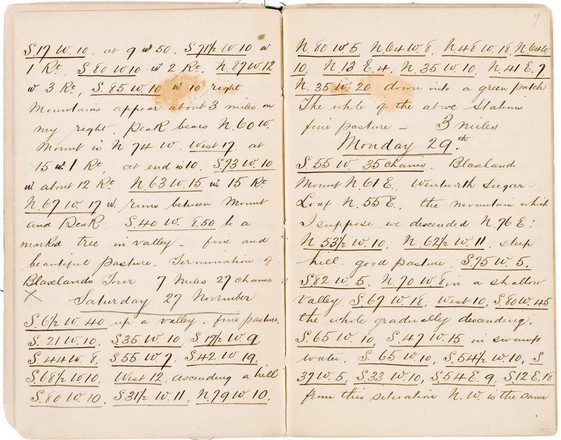
Notebook
1813–1814
B 795 pp. 6-7
MSS notebook
B 795 pp. 6-7
MSS notebook
In 1813 the respected surveyor and explorer George William Evans (1780–1852), was sent by Governor Lachlan Macquarie to find a passage through the interior of New South Wales. He followed the route of the Blaxland, Wentworth and Lawson expedition, and became the first European to cross the Great Dividing Range into the expansive lands of New South Wales where he founded the site for Bathurst.
As well as being a competent surveyor, Evans was also an accomplished artist. His View near Grose Head, New South Wales (1809), with its wild landscape and untouched beauty, is thought to be one of the earliest surviving depictions of a Blue Mountains view. The work probably depicts the Grose River near the base of Grose Head, at the foothills of the Blue Mountains.


 Back to list
Back to list